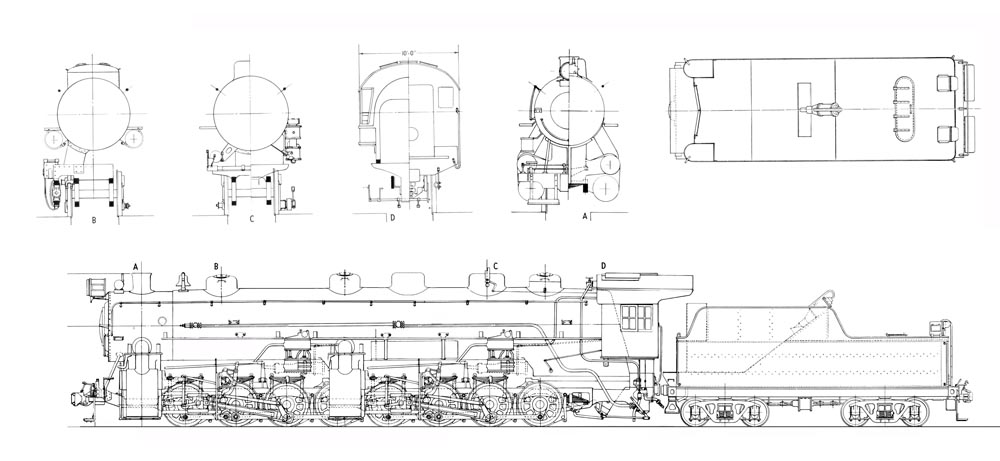

Country
Year
Class
Superheated steam 4 cylinder single exp.
0-8-8-0

In the panorama of American railway companies, Norfolk & Western has always had a special focus. In fact today Norfolk Southern, direct descendant of N&W, is the largest railway company in the USA, after the absorption of Conrail and on the East Coast what Union Pacific is for the West Coast. Norfolk & Western has always had in its history a particular attention to the development of its traction vehicles that were only partially produced outside. In fact, the Juniata plant was able to meet the company's needs almost entirely. From there came out locomotives famous far beyond national borders: even the least attentive of European enthusiasts knows some of them: the Class J, the magnificent Northern (4-8-4) with fairing, the Class A, the first 2-6-6-4 for fast freight and heavy passenger services, the Y6b, the Mallet par excellence, which for decades carried the coal traffic from the mines in the Allegheny to the port of Norfolk. Less well known are N&W's 0-8-0s, shunting locomotives to which the company attached considerable importance. Partly outsourced, partly built or developed in-house, these locomotives faced heavy and complex tasks, shunting endless rows of wagons to ore collection and transfer depots. For the handling in the port of Norfolk, where N&W had a particular structure of docks, several experiments were tried, since the USRA derived 0-8-0 were at the limit of their possibilities: they tried to fully automate the power supply and also, with this 0-8-8-0, to find solutions to improve and speed up the service. The Yardmaster, as it was called with the usual seriousness of N&W, was built by assembling some parts of the available 0-8-0, it was a 4-cylinder single expansion, in this preceding the experiments that other companies were doing, and also served as a test bed and the development of the A class. It responded very well to the needs of power and traction at low speed, but was clearly lacking in agility, an essential feature for shunting locomotives or "switchers". It remained in service until the end of World War II, and took charge of the heaviest shunting at Norfolk, but it was never mass produced and was scrapped when more serious repairs were needed. Photos of this car are few and hard to find. I would therefore ask anyone who finds any to make them available for publication on this site, in the meantime a view of the working environment of this locomotive. Thank you.
